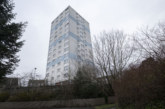Yesterday, Housing Secretary Robert Jenrick MP announced an additional £3.5bn to the Building Safety Fund, to remove unsafe cladding from high-rise residential buildings 18 metres and above, as well as details of a low interest loan for buildings below that height. LABM garners opinion from across the sector.
The Housing Secretary said he was announcing “a clear plan to remove unsafe cladding, to provide certainty to leaseholders, to make the industry pay for its faults of the past, to create a world class building safety regime and to inject confidence and certainty back into this part of the housing market.”
In addition to the new funding, Jenrick also announced a long-term low interest loan scheme to support the remediation of cladding on buildings between four and six-storeys, stating, “no leaseholder will ever pay more than £50 a month towards the removal of unsafe cladding”.
There are many leaseholders across the country living in buildings with unsafe cladding and multiple other fire safety faults. The cost of the remedial work to rectify those safety issues in all affected buildings is huge. In a 10pm BBC News report, which aired on the day of the announcement, a leaseholder in Manchester told his story. He faces a repair bill that runs into tens of thousands of pounds. In the news report he said: “We don’t know where we’re going to get the money from. We as leaseholders feel like we’re just at the short end of this horrible, horrible mess, where we’re not being protected by the Government like they promised us they would.”
The above comments reflect one leaseholder’s experience, however there are many more in similar predicaments. This is an appalling situation, totally unacceptable and for those still living in properties yet to be made safe, a particularly frightening scenario.
What about the impact of covering remediation costs on social housing providers and their residents too? Industry bodies in the sector are quite rightly concerned about this, and feel the remediation costs need to be covered so housing providers can continue their vital work maintaining the homes of people in the lowest incomes and investing in the social housing the country needs.
Funding welcome but relief needs to be brought forward to prevent wider economic damage
“It is good that the Secretary of State has secured unprecedented funding to ensure leaseholders in high-rise blocks will not have to pay anything towards cladding remediation. This is an important step towards protecting leaseholders from the unfair cost of a crisis that is not of their making and something the LGA has long-called for,” says Lord Porter, Building Safety Spokesperson at the Local Government Association. However Lord Porter went on to say: “No leaseholder should have to pay the costs of making their homes safe. Everything should be done to force developers and product manufacturers to meet the costs they have imposed on the country through decades of failure on an industrial scale.
“The Grenfell Tower disaster exposed a building safety system that is not fit for purpose. If a building found to be unsafe has been built according to Building Regulations, then the Treasury needs to pick up the cost of remediation and, if not, then those responsible for building it must pick up the cost to make it safe. If a product on the building has failed, then the manufacturer must be liable for the cost.
“We urge the Government to bring forward this relief as soon as possible to ease the suffering of leaseholders and prevent wider economic damage that could result if the cladding scandal continues to impact the housing market as it has done recently. Social landlords taking swift and responsible action to fix their dangerous buildings will also need their costs covered so they can also focus on investing in the social housing the country needs.
“In some areas many building safety failures are not caused by dangerous cladding but other construction faults. It is important that these leaseholders can also be protected from the cost of any repairs to make their homes safe.”
Funding and commitment to building safety welcome, but more support needed for housing associations
Kate Henderson, Chief Executive of the National Housing Federation, said: “This additional funding and reconfirmation of the Government’s commitment to building safety is hugely welcome. This is something we have been calling for along with leaseholder groups, and we are glad to see the Government using this opportunity to prioritise buildings most at risk.
“Unfortunately, there are still people in buildings with safety issues who will still face costs. It is good that the Government is trying to make these costs manageable for leaseholders, but overall we do not think it is right that leaseholders should pay for any failings of unfit Building Regulations.
“We are still very concerned about the impact of covering remediation costs on social housing providers and their residents; people who are so far forgotten in this crisis and for whom there is no funding. Not-for-profit social housing providers estimate they will have to spend in excess of £10bn to make all their buildings safe. This money is being diverted away from providing services and maintaining the homes of people in the lowest incomes in this country as well as building new affordable homes for those in need.
“We are supportive of anything that aims to recover costs from those responsible and will look forward to seeing the detail of a new development levy. It is important that any levy does not simply get passed on, increasing the cost of affordable homes that not-for-profit housing associations purchase from developers, and future homes bought by individuals on a shared ownership basis.”
Funding will provide much-needed certainty for leaseholders in high-rise, but it’s not enough
Chartered Institute of Housing (CIH) Chief Executive Gavin Smart said:“We welcome the additional £3.5bn for the replacement of unsafe cladding on high-rise residential building. This new money will provide much needed certainty for leaseholders of high-rise accommodation, who were concerned about how to pay for this work.
“But sadly it will not be enough. In fact replacing all the unsafe cladding across the social and private rented sector in England will cost around £15bn.
“The funding announced will also only cover cladding on buildings over 18 metres. That really should be extended to apply to all buildings with unsafe cladding, whatever their height.
“We need more details on the proposal to introduce long-term loans for leaseholders who live in buildings between 11 and 18 metres. While it caps repayment at £50 per month, it is unclear whether the total amount will be capped. In any case it is unlikely that this scheme will deal with the pressing issue of leaseholders finding themselves in negative equity right now.
“It is disappointing that the announcement does not address the costs associated with the additional remedial work, in addition to replacing unsafe cladding, required to make buildings safe now. This is estimated at more than £16bn. The Government needs to address this is as a priority, as it is not fair that these costs should be passed onto leaseholders.”
Funding should apply to all affected buildings regardless of their height
Jonathan O’Neill OBE, Managing Director of the Fire Protection Association (FPA): “It has now been more than three and a half years since the issue of combustible cladding surfaced as an issue for leaseholders. Whether the problems arose due to ambiguous and confusing legislation, a broken regulatory system, ignorance or incompetence in the construction sector, or suppliers of building products gaming the system, what is abundantly clear is that it was of no fault of the leaseholders who continue to face uncertainty despite the announcement.
“The Government must act now and support all leaseholders, in all affected buildings regardless of their height, with grants to bring this debacle to a close. It should then be on the Government to pursue those responsible through the courts to ensure the money is fully repaid. This has been going on for too long, it is completely unacceptable that we continue to have people living in buildings, which are fundamentally unsafe and leaseholders facing financial ruin for believing that we had a regulatory system that was fit for purpose and robust. The FPA has made repeated requests for the government to ban the use of combustible materials on all high-risk buildings; this situation is clearly of its own making and they must act now to bring this debacle to a close.”
Urgent investment into training for contractors tasked with making repairs needed
Peter Johnson, Chairman of Vivalda Group — independent fabricator/distributor of non-flammable cladding, said: “While I broadly welcome this as a step in the right direction, this figure still falls a long way short of the £15bn fund that the select committee recommended to fix unsafe cladding on all high-rise buildings. Nevertheless, there remain challenges to implement such a plan. Right now, the cladding sector is pretty much working at full capacity — in terms of the skilled workforce available to fix cladding safely onto buildings. Installing cladding is a skilled job and without a significant increase in trained, qualified people, I can’t see how the industry can deliver such a huge project at scale.
“I understand various training schemes have been discussed and may well be in process, using tried and tested organisations such as the CITB and NFRC. However, it appears they have been put on hold due to lockdown. I urge the government to re-engage these training organisations and construction bodies as soon a safely possible to get these training schemes up and running with great urgency.
“Clearly, it is only right and proper for the Government to be putting adequate funds in place to fix this national disgrace, but it should also be focusing on the barriers to delivery, such as skills shortages. Lack of available skilled labour could be the Achilles Heel of the remediation work.”
Header image ©EtiAmmos/AdobeStock.









